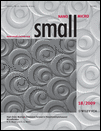Holey Gold Nanowires Formed by Photoconversion of Dissipative Nanostructures Emerged at the Aqueous–Organic Interface†
We thank Prof. Y. Katayama for the use of Malvern Zetasizer Nano ZS. This work was supported by a Grant-in-Aid for Science Research in a Priority Area (No. 19205030), a Grant-in-Aid for the Global COE Program, “Science for Future Molecular Systems”, a Grant-in-Aid for the Scientific Research on Innovative Areas, “Emergence in Chemistry” from the Ministry of Education, Culture, Sports, Science, and Technology of Japan and by JST, CREST. T.S. acknowledges the support of JSPS Research Fellowship of Young Scientists.
Graphical Abstract
Gold nanowires are obtained by photoreduction of linear self-assemblies formed from Au(OH)4− and tetra-alkyl ammonium ions at the water–chloroform interface. They are dissipative nanostructures formed only under non-equilibrium conditions, which require continuous vectorial transport of ammonium ions across the interface. Nanocavities are observed in nanowires at almost regular intervals, which is a salient feature of dissipative structures.





